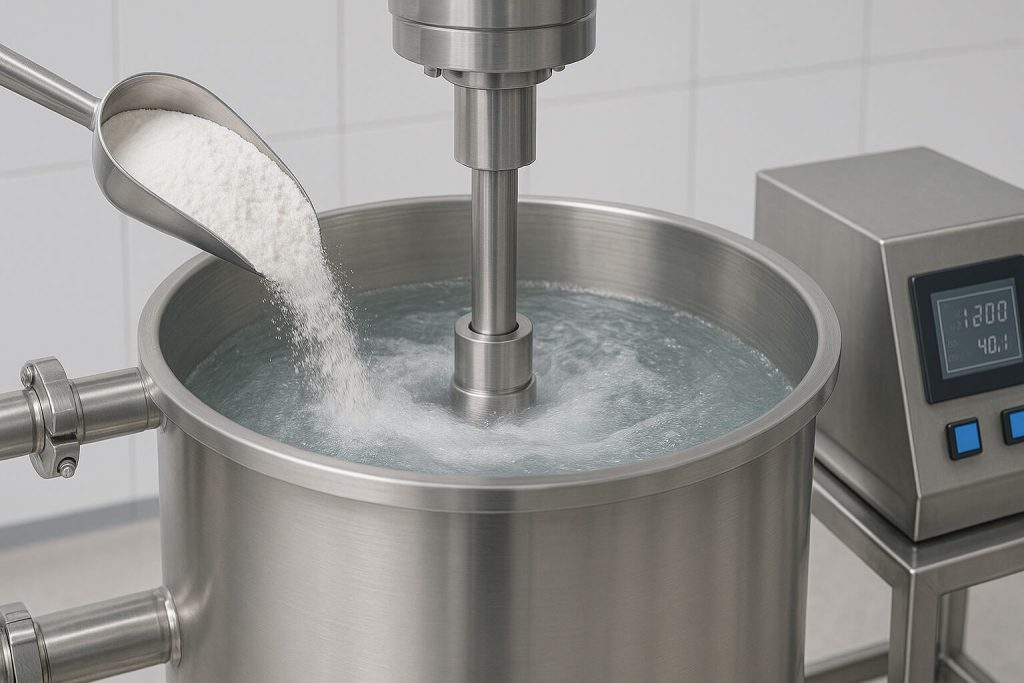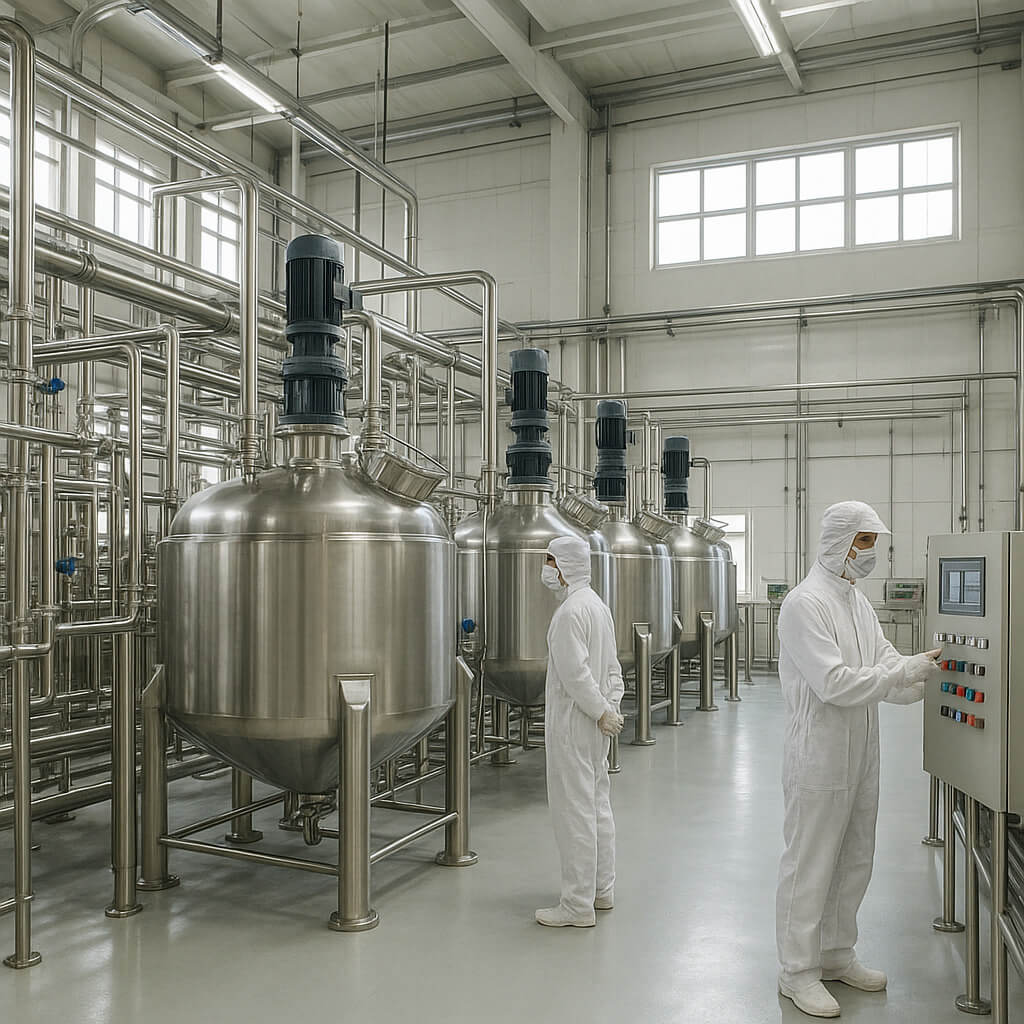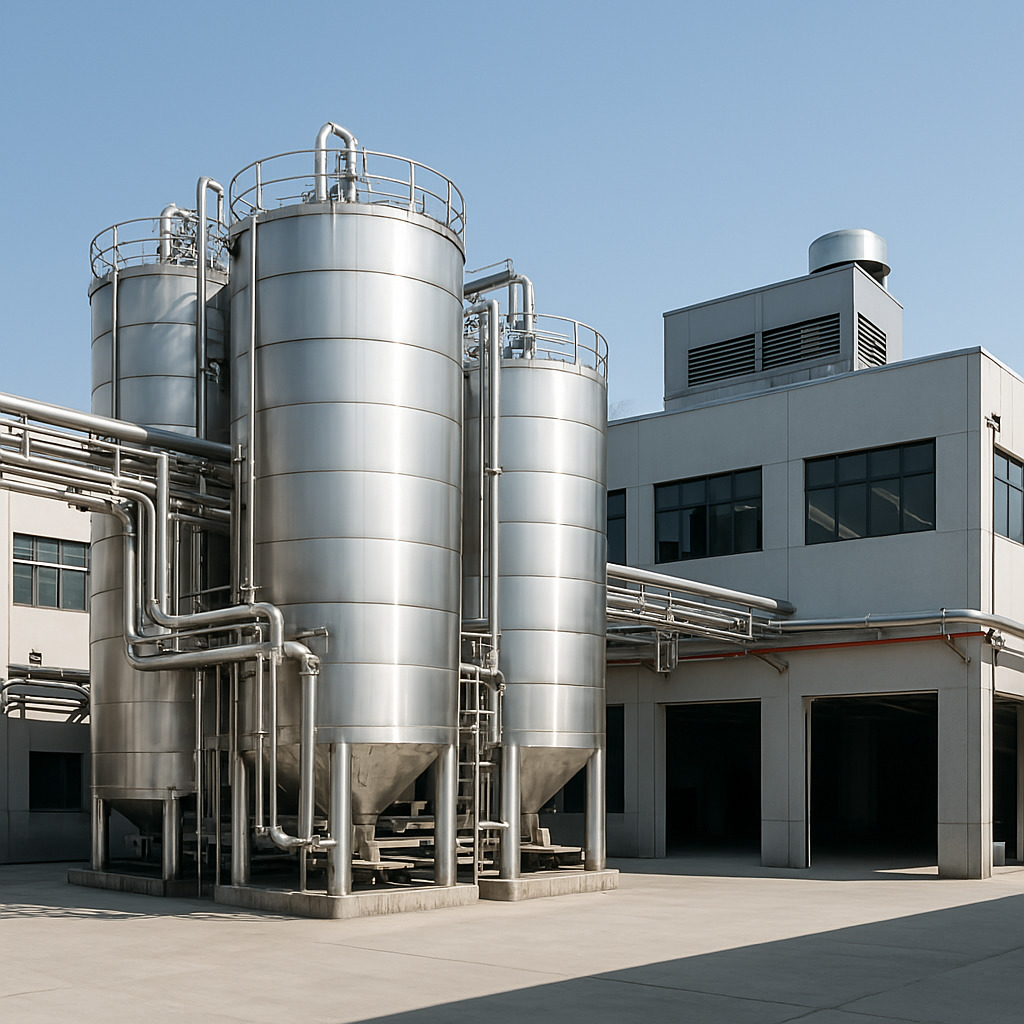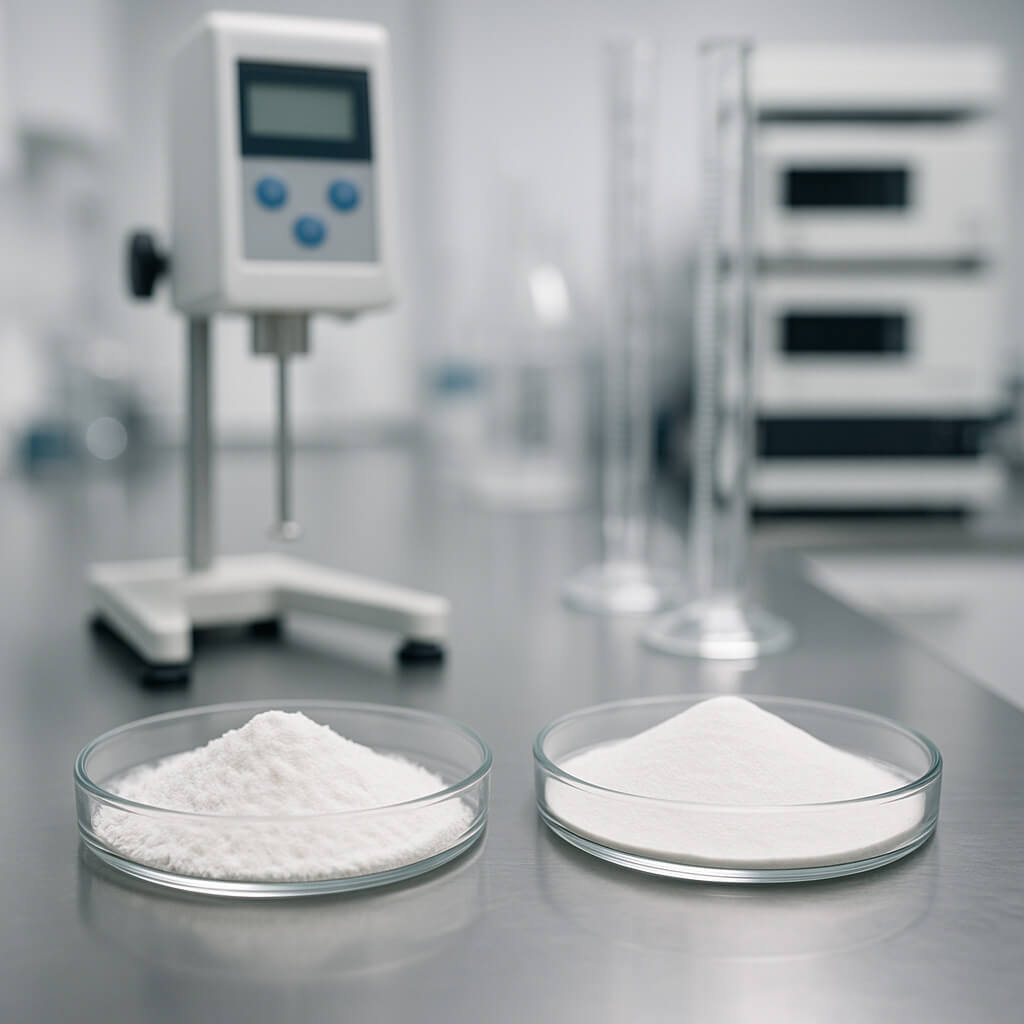Low viscosity HPMC (Hydroxypropyl Methylcellulose) is a cellulose derivative that has become a key ingredient across a range of industries. From pharmaceuticals to food and construction, its unique properties and versatility make it highly valuable in formulations that require a specific level of thickness, consistency, and ease of use. In this article, we will explore the properties, applications, and benefits of low viscosity HPMC, providing insight into why it’s the preferred choice for many industrial uses.

1. What Are the Properties of Low Viscosity HPMC?
Low viscosity HPMC is a cellulose ether modified with hydroxypropyl and methyl groups, which allows it to dissolve in both hot and cold water. But here’s the kicker… it’s the low viscosity that allows for smoother, more consistent formulations that are crucial in certain applications. The lower the viscosity, the more fluid the solution, which can be an advantage for manufacturing processes that require easy application and quick dissolution.
Viscosity is one of the most significant properties of low viscosity HPMC, as it impacts the flow and texture of a product. This property is essential in the pharmaceutical industry for formulations like suspensions, where a lower viscosity ensures easier mixing and faster dissolution. Similarly, in the food and beverage industry, low viscosity HPMC is often used as a stabilizer or emulsifier, where it helps achieve the desired texture without thickening the product excessively.
In addition to viscosity, solubility is another critical factor for low viscosity HPMC. Its solubility in both hot and cold water means that it can be used in a wide range of temperature conditions, making it ideal for diverse industrial applications. Finally, low viscosity HPMC has good thermal stability, which allows it to maintain its properties even under varying temperature conditions, making it suitable for use in industries where heat plays a role in processing.
| Property | Description | Application Examples |
|---|---|---|
| Viscosity | Low viscosity, easy flow | Pharmaceuticals, food, cosmetics |
| Solubility | Soluble in hot and cold water | Used in liquid suspensions and gels |
| Thermal Stability | Stable under varying temperatures | Suitable for high-heat environments |
2. Why is Low Viscosity Important for HPMC Applications?
The importance of low viscosity in HPMC cannot be overstated. Ready for the good part? Low viscosity allows manufacturers to create products with smooth textures and uniform consistency, which are essential for ensuring product quality and ease of use. In many cases, low viscosity HPMC is selected specifically because it allows for easy flow and reduces resistance during manufacturing and processing.
In the pharmaceutical industry, low viscosity HPMC is ideal for tablet coatings and controlled-release formulations. Since low viscosity allows the substance to flow smoothly and uniformly, it aids in creating consistent coatings and helps control the release rate of active pharmaceutical ingredients. This ensures that the drug is delivered at a controlled rate, which is essential for patient compliance and therapeutic efficacy.
In food manufacturing, low viscosity HPMC is used as a stabilizer and emulsifier, particularly in products like sauces, dressings, and plant-based dairy alternatives. Its low viscosity ensures that the product maintains a smooth texture without becoming too thick or gooey. It also helps prevent ingredients from separating, ensuring a consistent product over time.
In the construction industry, low viscosity HPMC is often added to mortars and adhesives to improve workability. Its low viscosity allows the product to flow smoothly and be applied more easily, enhancing the efficiency of workers while maintaining the strength and adhesion of the final product.
| Industry | Role of Low Viscosity HPMC | Benefits |
|---|---|---|
| Pharmaceuticals | Tablet coatings, controlled-release | Ensures uniformity, controlled release |
| Food | Stabilizer, emulsifier | Maintains texture, prevents separation |
| Construction | Mortars, adhesives | Improves workability and ease of application |
3. How Does Low Viscosity HPMC Affect Pharmaceutical Applications?
In the pharmaceutical industry, low viscosity HPMC is particularly valuable for its role in tablet formulations and controlled-release systems. But here’s the kicker… the ability to adjust viscosity levels allows pharmaceutical manufacturers to fine-tune the release rates of medications, ensuring that active ingredients are delivered at the right time and in the right dosage.
Low viscosity HPMC is commonly used as a binder in tablet formulations. It helps hold the ingredients together while ensuring that the tablet can dissolve properly when ingested. The low viscosity enables the formulation to be easily processed into tablets without excessive thickening, making it suitable for high-speed production lines.
In controlled-release formulations, low viscosity HPMC allows for the creation of an even coating around the active ingredient. This coating is designed to slowly dissolve over time, releasing the drug at a controlled rate. By adjusting the viscosity, manufacturers can control how quickly the coating dissolves, which directly impacts the speed and consistency of the drug release.
Another important application of low viscosity HPMC in pharmaceuticals is in liquid suspensions, where it helps keep active ingredients evenly dispersed in the liquid. Its low viscosity ensures that the suspension flows smoothly, making it easier to administer and ensuring that the medication is uniformly distributed.
| Application | Function of Low Viscosity HPMC | Benefit |
|---|---|---|
| Tablet Coatings | Binder, ensures even coating | Controlled drug release, uniform dosage |
| Controlled-Release | Regulates dissolution rate | Consistent and sustained drug delivery |
| Liquid Suspensions | Keeps ingredients evenly dispersed | Easier administration, uniform dosage |
4. What Are the Applications of Low Viscosity HPMC in the Food Industry?
Low viscosity HPMC has a wide range of applications in the food industry, primarily due to its ability to act as a stabilizer, emulsifier, and thickener. Ready for the good part? Its low viscosity allows it to be used in food products without altering the desired texture or consistency. It helps improve the mouthfeel, texture, and stability of food products, making it especially valuable in products that need to maintain consistency over time.
For example, in dairy products like milk, yogurt, and plant-based alternatives, low viscosity HPMC is used to stabilize emulsions and prevent separation. In sauces, dressings, and soups, it helps to thicken the product without making it too heavy or viscous. The ability to adjust viscosity allows manufacturers to create the perfect consistency that enhances the eating experience.
In the bakery sector, low viscosity HPMC is used as a dough conditioner to improve texture and extend shelf life. It also helps in stabilizing fillings and glazes, ensuring that the product maintains its integrity throughout the production process.
For plant-based foods, low viscosity HPMC plays a key role in improving texture, making the product more appealing to consumers. Its ability to mimic the mouthfeel of traditional dairy products makes it a crucial ingredient in vegan and lactose-free products.
| Application | Role of Low Viscosity HPMC | Benefits |
|---|---|---|
| Dairy Products | Stabilizer, emulsifier | Prevents separation, improves texture |
| Sauces & Dressings | Thickener, emulsifier | Enhances consistency without heaviness |
| Plant-Based Foods | Texture enhancer | Mimics mouthfeel of dairy, improves appeal |
5. How Does Low Viscosity HPMC Benefit the Construction Industry?
In the construction industry, low viscosity HPMC is widely used in the formulation of mortars, adhesives, and plasters. Its ability to provide improved workability and adhesion makes it an essential ingredient in many construction products. What’s the real story? The low viscosity ensures that the material is easy to apply, while also maintaining the strength and bonding properties needed for high-performance construction.
Low viscosity HPMC is particularly useful in tile adhesives and joint compounds, where it enhances workability, allowing for easy application and adjustment. Its ability to retain moisture also helps prevent premature drying, ensuring that the mortar or adhesive remains workable during the installation process.
In plaster formulations, low viscosity HPMC improves the spreadability and smoothness of the mixture, making it easier to apply and finish. It also helps control the setting time, allowing workers to adjust the plaster before it hardens.
What’s the takeaway? The use of low viscosity HPMC in construction products helps improve efficiency, product performance, and ease of application, making it a highly valuable additive for the industry.
| Application | Role of Low Viscosity HPMC | Benefits |
|---|---|---|
| Mortars | Improves workability and adhesion | Easier application, better bonding |
| Tile Adhesives | Enhances smoothness and moisture retention | Improves spreading and application |
| Plasters | Improves spreadability and texture | Easier to apply, controls setting time |
6. How Is Low Viscosity HPMC Used in Cosmetic Formulations?
In the cosmetic industry, low viscosity HPMC is highly valued for its ability to create smooth, stable emulsions and suspensions. Ready for the good part? This property makes it an excellent choice for creams, lotions, shampoos, and other personal care products. It helps improve texture, making the product feel lighter on the skin while maintaining stability and consistency.
Low viscosity HPMC is used in the formulation of gels, where it provides a smooth texture and improves the spreadability of the product. In lotions and shampoos, it helps achieve the desired viscosity without making the product too thick or greasy. The versatility of low viscosity HPMC allows it to be used in both water-based and oil-based formulations, making it a versatile ingredient for various cosmetic products.
Moreover, its ability to retain moisture and form stable emulsions is essential for creating products that last longer and maintain their quality over time. It also helps prevent the separation of ingredients, ensuring that the final product remains uniform throughout its shelf life.
| Application | Role of Low Viscosity HPMC | Benefits |
|---|---|---|
| Gels | Texture enhancer, stabilizer | Smooth texture, improves spreadability |
| Lotions & Shampoos | Emulsifier, stabilizer | Light texture, prevents separation |
| Creams | Moisture retention, emulsification | Enhanced stability and shelf life |
7. How Do You Measure and Control the Viscosity of HPMC?
Measuring and controlling the viscosity of HPMC is essential for achieving the desired product performance. The viscosity of low viscosity HPMC is usually measured using instruments such as a Brookfield viscometer or a rotational viscometer. These instruments allow manufacturers to measure the flow properties of the solution under different shear rates, providing a clear picture of how the material will behave in real-world applications.
But here’s the kicker… viscosity can also be controlled during the manufacturing process by adjusting factors like the concentration of HPMC, the degree of substitution, and the temperature. By fine-tuning these parameters, manufacturers can achieve the exact viscosity needed for their specific application, ensuring that the product performs as expected.
In some cases, manufacturers may also use additives to modify the viscosity further, depending on the requirements of the formulation. For example, the addition of salts or other thickening agents can help increase the viscosity if needed.
| Method | Purpose | Equipment Used |
|---|---|---|
| Brookfield Viscometer | Measures viscosity at different shear rates | Brookfield LV, RV models |
| Rotational Viscometer | Measures flow under varying conditions | Advanced rheometers and rotational viscometers |
| Concentration Control | Adjusts viscosity by modifying HPMC concentration | Precise measurement of HPMC input |
8. What Are the Key Benefits of Low Viscosity HPMC?
Low viscosity HPMC provides several key benefits across multiple industries. First and foremost, its ability to improve product performance by enhancing texture, stability, and consistency makes it indispensable in many applications. Whether in pharmaceuticals, food, cosmetics, or construction, low viscosity HPMC offers a versatile solution that can be tailored to meet specific formulation requirements.
Moreover, low viscosity HPMC is highly adaptable, allowing manufacturers to adjust its properties for different applications. This flexibility is particularly important for industries like pharmaceuticals, where precise control over drug release rates is essential, and construction, where ease of application is key.
From an environmental standpoint, low viscosity HPMC is also an eco-friendly option, as it is biodegradable and derived from renewable resources. This makes it an attractive choice for companies looking to reduce their environmental impact while still achieving high-performance results.
| Benefit | Application | Impact on Product Performance |
|---|---|---|
| Texture Enhancement | Food, Cosmetics | Smooth texture, improved mouthfeel |
| Improved Stability | Pharmaceuticals, Food | Consistent performance over time |
| Eco-friendly | All industries | Biodegradable, sustainable production |
9. What Are the Limitations of Low Viscosity HPMC?
While low viscosity HPMC offers many advantages, there are some limitations to consider. For instance, in certain pharmaceutical applications, it may not provide the same level of control over drug release as higher viscosity grades of HPMC. This limitation can affect the efficacy of controlled-release tablets, where precise viscosity control is essential for consistent performance.
Additionally, low viscosity HPMC may not be suitable for applications that require a high degree of gel formation. In such cases, higher viscosity grades of HPMC or other thickening agents may be necessary to achieve the desired consistency.
What’s the real story? While low viscosity HPMC is an excellent choice for many applications, it’s essential to carefully evaluate the specific needs of the formulation to determine whether it’s the right fit.
| Limitation | Impact on Performance | Alternative Solutions |
|---|---|---|
| Limited Control | Less control over release rate | Higher viscosity HPMC or other agents |
| Limited Gel Formation | Insufficient for certain formulations | Use higher viscosity HPMC or gelling agents |
10. What Are the Future Trends for Low Viscosity HPMC?
The future of low viscosity HPMC looks promising, with growing demand for sustainable and high-performance materials across various industries. Innovations in formulation and modifications of low viscosity HPMC are opening up new possibilities for its use in advanced pharmaceutical and food applications.
There is also increasing interest in using low viscosity HPMC in eco-friendly and biodegradable products, as companies continue to seek more sustainable alternatives to synthetic chemicals. With its biodegradability and versatility, low viscosity HPMC is likely to play an even more significant role in the future of these industries.
| Trend | Potential Impact | Future Applications |
|---|---|---|
| Sustainability | Increased demand for biodegradable materials | Growth in eco-friendly products |
| Innovation | Tailored formulations for new needs | Advanced pharmaceutical and food uses |
FAQ Section
Q1: What is low viscosity HPMC?
Low viscosity HPMC is a cellulose derivative with low resistance to flow, which makes it suitable for various industrial applications requiring smooth textures and consistent performance.
Q2: How does low viscosity HPMC work in pharmaceutical applications?
In pharmaceuticals, low viscosity HPMC is used as a binder in tablets, as well as in controlled-release formulations. It helps control the release rate of drugs and ensures uniform suspension.
Q3: What are the key applications of low viscosity HPMC in the food industry?
Low viscosity HPMC is used as an emulsifier and stabilizer in food products like sauces, dressings, and plant-based foods. It improves texture, prevents separation, and enhances mouthfeel.
Q4: How does low viscosity HPMC benefit the construction industry?
In construction, low viscosity HPMC improves the workability and adhesion of mortars, adhesives, and plasters. It allows for smoother application and better bonding strength.
Q5: What are the benefits of using low viscosity HPMC in various industries?
Low viscosity HPMC provides benefits like improved product texture, stability, and ease of application. It is versatile and can be used in food, pharmaceuticals, construction, and cosmetics, enhancing product performance.




